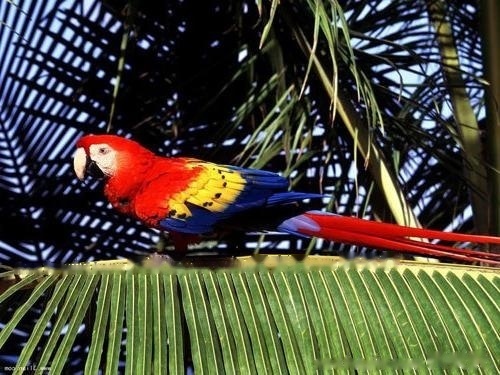At present, the budgies raised and played in China are all captive birds bred under artificial breeding, and their physiques are weakened. Therefore, breeders should choose individuals with wide and long bodies, plump bodies and energetic individuals for breeding and breeding, which is beneficial to the rejuvenation of the population in the future. So what should we pay attention to when raising budgies?

Budgie
Wild budgerigars live in groups, feed on plant seeds and fruits, nest in caves, breed 1-2 nests per year, and lay 4-7 eggs in each nest. The eggs are oval in shape and the shell is pure white. Budgerigars in captivity are very good at dismantling cages because of their hard shells and flexible toes and mouths. The room temperature in winter should be kept at 5-10℃.
In southern cities of my country, where the temperature in winter is not lower than 0℃, budgies can be raised and bred in open-air cages. A small amount of breeding in the family can choose suitable cages, and the breeding and breeding effect is very good. Enough perches should be set up in the cage for them to climb and perch, and the ground or bottom of the cage should be cushioned with fine sand for sand bathing and feeding. The breeding room should be well ventilated and the light should be long. A large number of budgerigars are fed in groups, and they drink a lot of water. Therefore, birds often defecate while drinking water, which is often easy to contaminate their drinking water. Therefore, it is best to use the automatic drinking fountains used by poultry to supply water, so that they cannot enter the water for bathing, which can be maintained. Drinking water is clean.
Raising budgies in the south can breed in all seasons, but if the temperature in summer is too high, it is recommended not to let the parent birds nest in the nest box of budgies. Wild parrots choose their nests on dead trees, and bite out a nest to breed offspring. The parrots use dark nests under artificial rearing conditions. Of course, the darker the dark nest, the better. Birds lay eggs in the darkest part of the nest. The darker the hatch, the less easily frightened the bird, and the higher the reproductive success rate. When the bird is frightened, it will step on it randomly. If the nest design is not high enough, it will easily step on the egg or step on the bird. If the bird is not wide enough, the bird will bite the box, which is nesting behavior.
![[Dog Training 5] The training method of pet dog dining etiquette](/static/img/12192/12192_1.jpg)




